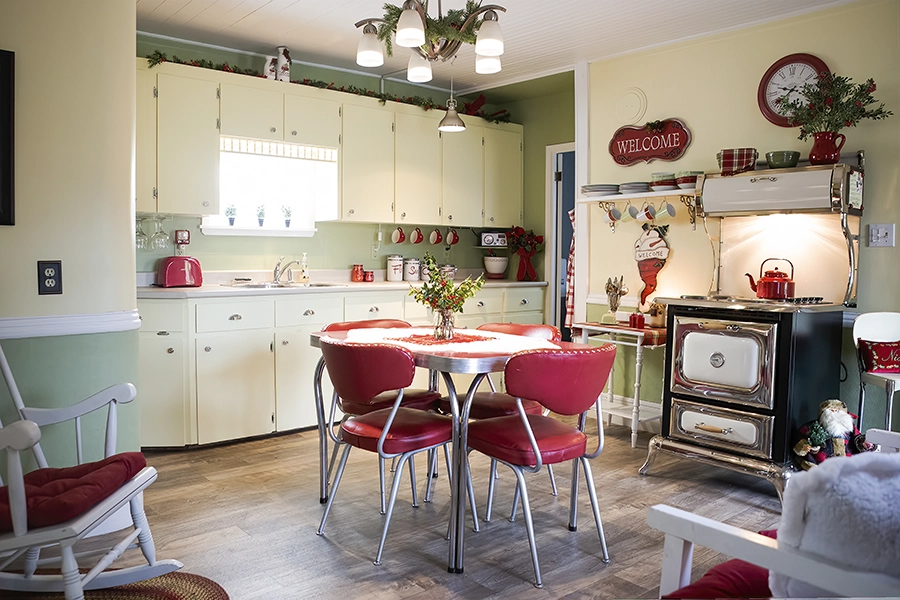The best interior design is one that reflects your personality, but a little advice goes a long way. East Coast Living asked these Atlantic Canadian design pros to share the best tips you could use at home.
Walls
Terry Doiron, owner of interior design firm Oak Leaf Interiors in Dartmouth, N.S., suggests using wallpaper on a focal wall. Papering only one wall keeps the price down. You can pull a colour from the wallpaper and use it to paint the other walls.
Doiron says higher end wallpapers should be pasted. “As soon as wallpaper hits water, it starts to shrink and stretch and rip and do all kinds of wild and wonderful things,” says Doiron. You can make your own paste or buy it by the tub from paint stores.
“Pick everything before you pick the paint,” says Doiron. “Most people don’t realize that until they’re in the process. There’s a million shades of paint, but there’s not a million sofas. Paint comes last, it allows you that range of choice.”
Art pieces also help personalize your home. Jenneil Cooper, design consultant with SAM Design in St. John’s, NL says to hang your art at eye-level height. For standard-sized ceiling height, place the middle of your piece about 1.5 metres from the floor. If your ceilings are higher, add more height but stay close to eye-level. If placing something over a piece of furniture, keep between 20–25 centimetres above the item.
Mix and match
Spending money on key statement pieces is the golden rule for mixing high- and low-cost décor, says Nancy Dibblee, owner of Fine Interiors in Halifax, N.S.
“You want to spend your money on statement pieces that are more durable and offer the most longevity.” A sofa, bed, and table are examples of pieces that will stand the test of time. Mix these in with lower cost items like pillows, blankets, poufs, stools, vases, frames.
“Add in some solid colour, patterns, and textures that will keep you on trend without long term commitment,” says Dibblee. “You can swap out the decor items seasonally.”
Mix tones, textures, and colours. Wood finishes don’t have to be the same. The same goes for mixing metals. Your hardware and your lighting can be completely different.
“Some of the freshest and most inspiring looks come from mixing all types of materials,” says Cooper.
Lighting
Lisa Larocque is a consultant at Lite it Up by Design in Dieppe, N.B. When hanging a fixture over a standard height dining table, keep she recommends keeping a little over 1.6 metres from floor to fixture, regardless of ceiling height.
Over a kitchen island, the distance from the floor to fixture should be 1.8 metres, unless you’re using pendants. Let the side of the light and the island dictate your final distance. Start with 1.2 metres. “If you’re sitting at the island, you don’t want [a light] hanging in your face,” says Larocque.
Fixtures in a living room should hang no longer than 40–45 centimetres. The standard placement for wall sconces is 185 centimetres from the floor.
She says always look for dimmable lights. A 3000k LED warm white bulb is the most popular ambient light.
Rugs
“Rugs bring pattern, colour, and character to your home,” says Dibblee. “On top of that, it can make everything feel really cozy.”
It can be tricky knowing how big a rug to buy or where to place it. “Make sure that the front legs of the furniture are on the rug,” says Dibblee. “Also have at least 10–15 centimetres of rug either side of the furniture.”
Dibblee likes adding rugs under the dining table. It’s a way of grounding the space. “The rule of thumb I pass along to my clients is to make sure the rug extends at least 20 centimetres around each side of the table. That way when you do pull back the chair, the legs still remain on the rug.” You’ll want more of a low-profile rug because you’ll be sliding chairs in and out.
For bedrooms, Cooper suggests a rug extending about 45 centimetres around the perimeter of the bed.


.jpg)


















